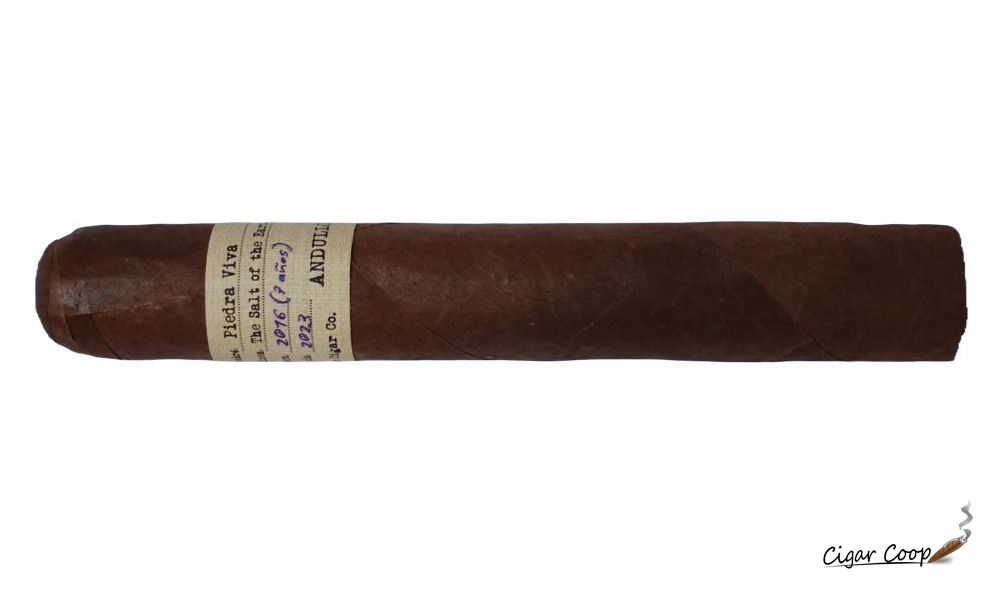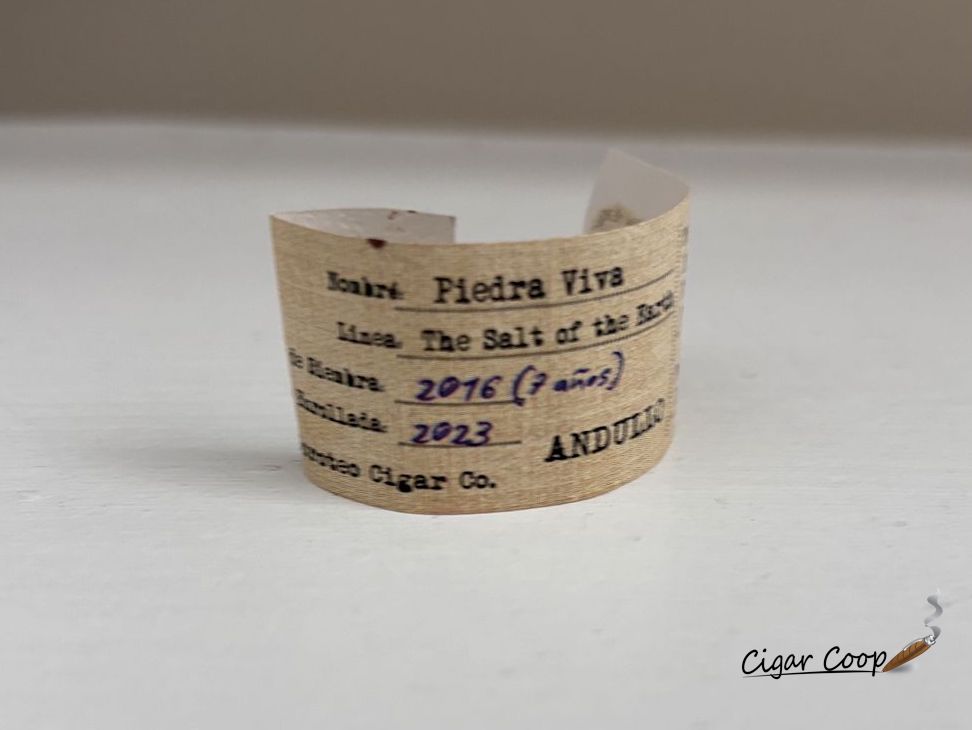
Today, we review Don Doreteo Cigars’ The Salt of the Earth Piedra Viva. Piedra Viva is one of two blends that make up The Salt of the Earth line. Salt of the Earth became the first regular production line for Don Doroteo in 2024. Juan Lugo founded Don Doroteo Cigars and the name pays homage to his grandfather, Doroteo Fermin Delgado. Back in 1936, at the age of 16, Doroteo decided to follow in his late father’s footsteps by growing tobacco in the heart of Santiago, Dominican Republic. One of the factories Doroteo grew tobacco for was La Aurora. In 2022, Juan Lugo reignited the partnership with La Aurora when he launched Don Doroteo Cigars.
When Don Doroteo launched, Lugo went to market with El Legado. The cigar was rolled in 2008 and had been sitting in the La Aurora factory’s aging room. While El Legado was an existing cigar that was sitting in La Aurora, Salt of the Earth represents the first effort where Don Doroteo would bring its own brand to market. Salt of the Earth has two distinct blends: Piedra Viva (translates to Living Stone) and Piedra Angular (translates to Corner Stone). Piedra Viva is a blend highlighted by an Ecuadorian-grown Cameroon wrapper, and Piedra Angular is a blend highlighted by Dominican Corojo. One common denominator of both blends is the use of Andullo tobacco. In addition to paying homage to his family, Don Doroteo Cigars pays homage to Dominican culture. Andullo tobacco is very much a part of the Dominican tobacco scene.
Let’s break down the Piedra Viva without further ado and see what this cigar brings to the table.
Don Doroteo The Salt of the Earth Piedra Viva – Cigar Review
SPECIFICATIONS
Blend and Origin
Piedra Viva (translates to Living Stone) features an Ecuadorian Cameroon wrapper, which houses a Nicaraguan binder and a mix of Dominican Andullo, Corojo, Criollo ’98, and Nicaraguan Condega Ligero and Condega Viso.
Wrapper: Ecuadorian Cameroon
Binder: Nicaraguan
Filler: Dominican (Andullo, Corojo, Criollo ’98), Nicaraguan (Condega Ligero, Condega Viso)
Country of Origin: Dominican Republic
Factory: La Aurora S.A.
As mentioned, Andullo tobacco is a big part of the Dominican tobacco industry. Andullo dates back to the Taino Indians who inhabited the region 500 years ago. It undergoes a very different curing process than traditional cigar tobacco leaves. This involves putting tobacco leaves in palm seed pods. The pods are then wrapped in rope and, in this case, fermented for two years, causing the Andullo tobacco to compress into a thick bar, almost looking like a roll of salami. Once it has hardened, it typically is carved off. It is more common as a pipe or chewing tobacco but has been used in some cigar blends.
Vitolas Offered
The Piedra Viva is offered in one size—a 5 3/4 x 54 Toro. The cigars are presented in ten-count boxes. Piedra Viva’s counterpart in Salt of the Earth, Piedra Angular, is the same size and is also presented in ten-count boxes.
Appearance (*)
The Ecuadorian-grown Cameroon wrapper of the Piedra Viva was medium to dark brown in color. It didn’t have much oil on the surface. When examining the wrapper, I noticed visible veins and some visible wrapper seams.

PERFORMANCE
Pre-Light Draw (*)
A straight cut was used to remove the Piedra Viva’s cap. Once the cap was removed, it was time for the pre-light draw experience. The cold draw delivered fruit, must, and a slight amount of natural tobacco notes. Overall, this was a satisfactory pre-light draw. At this point, it was time to toast up the Piedra Viva and see what the smoking phase had in store.
Tasting Notes
The Piedra Viva started with natural tobacco, wood, earth, white pepper, and musty notes. By the midway point of the first third, the natural tobacco notes moved to the forefront, while the wood, earth, pepper, and musty notes settled in the background. The natural tobacco notes had an inherent sweetness. The retro-hale produced additional layers of pepper and wood.
Late in the first third of the Piedra Viva, the pepper notes started to gradually increase in intensity. The pepper increase continued the gradual increase in the second third. At the same time, the wood and must notes also increased intensity. Meanwhile, the sweetness of the natural tobacco decreased in intensity. Just past the midway point, the wood and must displaced the natural tobacco as the primary note. The pepper was a more prominent secondary note. The natural tobacco and earth were more present. By the end of the second third, there was a more bitter component to the natural tobacco.
Things remained pretty constant during the final third. The wood and must were the primary notes. Meanwhile, the pepper, natural tobacco, and earth were secondary. There was a slight harshness to the blend. As the Piedra Viva came to a close, it finished with a soft, cool nub.
Burn
There were times when the burn of the Piedra Viva meandered and was not straight. This resulted in many touch-ups along the way. While the touch-ups did the trick, they were more frequent than I preferred. The resulting ash was silver gray, skewed toward the firmer side. As for the burn rate and burn temperature, both were ideal.

Draw
The draw of the Piedra Viva performed quite well. It had a touch of resistance, which I like. As for the burn rate and burn temperature, both were ideal.
Strength and Body
The Piedra Viva opened with medium strength and medium-bodied notes. As the smoking experience progressed, the intensity levels of the strength and body increased. By the midway point, the body progressed into medium to full territory. When the Piedra Viva reached the final third, the strength had moved into medium to full territory.
In terms of strength versus body, the body maintained a slight edge over the strength throughout the smoking experience.
BANDING AND PACKAGING NOTES (*)
The primary band of the Piedra Viva has a “wine label” or “tobacco label” style to it. It has information on tobacco and when it was harvested and rolled. I like this. There is a secondary Don Doroteo band that sits over a paper sleeve. Unfortunately, the secondary band comes off with the tobacco sleeve. It was also quite difficult to remove the paper sleeve. While I liked the sleeve aesthetically, I wouldn’t say I liked the fact that it was hard to get off and it took the secondary band with it.

OVERALL ASSESSMENT
Final Thoughts
I have to give Don Doroteo a lot of credit. Entering the market with two cigars utilizing Andullo tobacco is somewhat of a risk. I find Andullo to be a bit polarizing to many. In my case, I found the Andullo started very nicely with the Piedra Viva. The flavors of the Piedra Viva were balanced, and the Andullo contributed positively. As the cigar experience progressed, the Andullo became heavier, resulting in some of the harshness and bitterness. In the end, this was a tale of two cigars – a positive first half and a second half that fell below expectations. It still results in a respectable 87-point score, but in this case, you may want to try a sample and see what you think.
Summary
Key Flavors: Natural Tobacco, Wood, Earth, Must, Pepper
Burn: Very Good
Draw: Excellent
Complexity: Medium
Strength: Medium (1st 2/3), Medium to Full (Final Third)
Body: Medium (1st Half), Medium to Full (2nd Half)
Finish: Fair
Rating
Value: Try a Sample
Score: 87
REFERENCES
News Don Doroteo Salt of the Earth Heads to Retailers
Price: $16.75
Source: Don Doroteo
Brand Reference: Don Doroteo
Photo Credits: Cigar Coop
(*) Indicates this is not factored into the score or value rating




